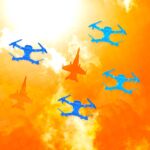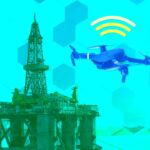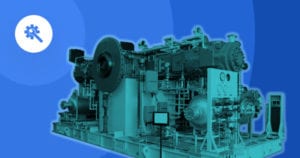
The image of the all-seeing dystopian drone is back in the public imagination. In the wake of COVID-19, reports of drones policing public spaces, enforcing social distancing guidelines, spraying disinfectant, and monitoring temperatures in a crowd have ignited imaginations and created concerns of the surveillance state.
However, these dystopian images are unlikely to come to fruition. The use of drones for functions such as public health monitoring or policing is at the concept stage, as public agencies look for new ideas in fighting the pandemic. Already we see many of these drone-Applications disregarded as impractical.
On the other hand, outside of the public eye, the industrial adoption of drones has been on the rise. Drones and drone software are currently reshaping how many well-established businesses run their operations in a post-pandemic world. From keeping agricultural fields intact to allowing utilities to “keep the lights on” for those sheltering at home, drone technology’s impact is undeniable.
Drones are already here, and not as public health hall monitors, but as the perfect socially-distanced worker for our essential industries.
The WFH Challenge for Field Workers
As a result of the pandemic, we’re seeing increased drone usage in primary and secondary industries, such as construction, agriculture, and utilities. Drone technology has become instrumental in helping companies return to work, all without putting employees at risk and enabling remote collaboration.
Industrial businesses have long faced challenges measuring progress in the field or on their job sites. For example, while farmers can track how many seeds they’ve planted, and what inputs they’ve applied, understanding the health and variability of crops across their 100-acre fields can be challenging. Similarly, for construction workers and project managers, understanding the progress, safety, and quality of more substantial commercial projects with hundreds of workers can be taxing. According to a 2016 report by McKinsey, agriculture and construction remain the least digitized of all industries.
These issues have now been compounded by shelter-at-home directives, as teams and contractors face reduced access to physical job sites. And despite the gradual lifting of these restrictions, companies and personnel still face risks and are devising new sets of best practices that prioritize worker health and safety amidst the ongoing pandemic.
Drones As Part of the ‘New Normal’
In construction, drone data is shaping how global and national teams run remote operations. Quality assurance workers, cost assessors, and owners/engineers are “visiting” and analyzing job sites virtually from the safety of their homes, ensuring that sites are restricted to only workers whose presence is absolutely essential. Since most workers can’t enter job sites, we’ve seen drones dispatched and flown curbside from their vehicles – likely contributing to the 56% rise in construction drone takeoffs DroneDeploy has seen over the past few weeks.
In agriculture, drones are enabling agricultural consultants to make contactless recommendations to their customers. Instead of walking the fields and meeting together, agronomists and seed representatives can fly drones, live-stream the data, and create and mark up maps where any variability exists – collaborating across the internet instead of in the field.
Drone usage has also become especially pertinent for the utility industry to “keep the lights on” while people shelter-in-place. It’s critical to keep up with power line inspections, particularly as we approach the fall and fire seasons; however, shelter-in-place has made it more difficult for inspectors to travel to necessary locations. Drone data ensures the sustainability and reliability of power lines and grids without the need for various workers in the field.
Aside from industrial adoption, the timeline for consumer applications of drones has also been accelerating. For commercial purposes, burgeoning services such as drone deliveries have experienced a resurgence in interest as companies scramble to offer essential goods.
Leading drone delivery companies are now tasked with rapidly mapping large areas of the U.S. with drones to provide the high-resolution topographic data they need to make accurate deliveries. We’ve also seen partnerships established before the pandemic, such as the one between CVS and UPS for drone delivery of medications to elderly populations in November 2019, expanding their scopes of service, indicating that drone delivery is here to stay.
Looking Forward
Despite the pandemic hamstringing numerous industries, drone adoption continues to rise under these challenging circumstances. We expect to see these examples of adoption as the “new normal,” given the significant worker safety and efficiency benefits they provide. We’re seeing roles like line-man, project manager, and agronomist adopt the dual job title of “Drone Operator,” as technical drone skills help enhance their efficiency, collaboration, and safety on the job sites.
The future of drone automation doesn’t imply widespread privacy infringement, but rather, improved remote collaboration across the industries that need it most.




 Related Podcast Episode
Related Podcast Episode




 Related Applications
Related Applications


 Latest IoT News
Latest IoT News







